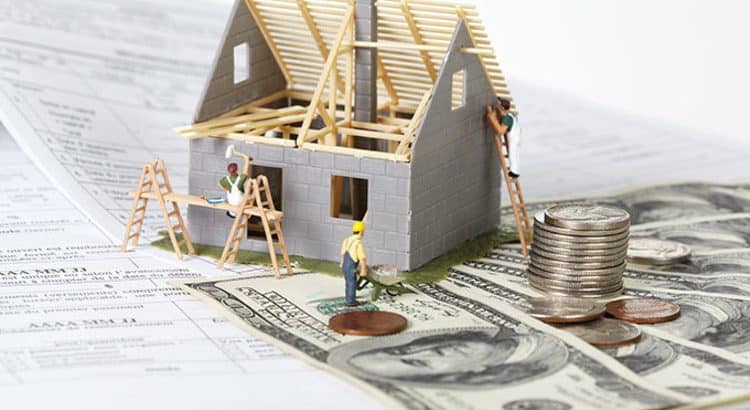Home renovation and repairs are essential for maintaining and enhancing the comfort, value, and safety of your living space. Whether you plan to remodel your kitchen, repair your roof, upgrade your bathroom, or make structural improvements, the costs involved can quickly add up. For many homeowners, bank loans for home renovation and repairs offer a practical financial solution to fund these projects without draining savings or disrupting cash flow.
This detailed guide will walk you through how to use bank loans effectively for home renovation and repairs, including types of loans, eligibility criteria, application process, and tips to maximize the benefits of your loan.
Why Choose a Bank Loan for Home Renovation and Repairs?
Renovation projects can be costly, and not all homeowners have sufficient funds upfront. Bank loans provide a structured, affordable way to finance repairs and upgrades with the following advantages:
- Access to substantial funds to cover labor, materials, permits, and contingencies.
- Flexible repayment options with monthly EMIs tailored to your budget.
- Potentially lower interest rates compared to credit cards or personal loans from non-banking sources.
- Preserve your savings for emergencies and other financial priorities.
- Improve your home’s value and comfort without financial strain.
Types of Bank Loans for Home Renovation
1. Home Renovation Loan
Specifically designed for renovation purposes, these loans cover a wide range of home improvement activities, including painting, flooring, plumbing, electrical work, and structural repairs.
- Loan amount can range from $10,000 to $100,000 or more depending on the lender.
- Tenure typically ranges from 1 to 5 years.
- Interest rates are competitive and may be fixed or floating.
2. Personal Loan
A personal loan can be used flexibly for any purpose, including home repairs and renovations. It generally requires less documentation and faster processing but may carry slightly higher interest rates.
3. Home Equity Loan or Home Equity Line of Credit (HELOC)
If you own your home with substantial equity, you can borrow against its value. These loans tend to offer lower interest rates and higher loan amounts.
- Home equity loans provide lump-sum funds.
- HELOCs work like a revolving credit line, allowing you to draw funds as needed.
Step-by-Step Guide to Using Bank Loans for Renovation and Repairs
Step 1: Assess Your Renovation Needs
Create a detailed plan outlining:
- What repairs or upgrades are needed
- Estimated costs for materials and labor
- Timeline for project completion
This helps you decide the loan amount you will need and demonstrate to the lender a clear purpose for the loan.
Step 2: Check Your Eligibility
Banks generally consider the following for loan eligibility:
- Credit score: 700+ preferred for best rates
- Income proof: Salaried or self-employed income verification
- Employment stability: Minimum 1–2 years in current job/business
- Existing debt: Manageable debt-to-income ratio
- Property ownership: Proof of ownership for home equity loans
Step 3: Choose the Right Loan Product
Consider your financial situation and renovation scope to select:
- A home renovation loan if you want a dedicated product with structured repayment.
- A personal loan for smaller or flexible funding needs.
- A home equity loan/HELOC if you have sufficient equity and want lower interest rates.
Step 4: Gather Required Documentation
Prepare these documents for your loan application:
- Identity proof (passport, driver’s license, Aadhaar, etc.)
- Address proof
- Income proof (salary slips, bank statements, tax returns)
- Property documents (title deed, sale deed, property tax receipts)
- Estimates or quotes from contractors or suppliers (if required)
Step 5: Apply for the Loan
You can apply online or at a bank branch. Provide accurate information and submit all documents promptly to avoid delays.
Step 6: Loan Sanction and Disbursement
Once approved, the bank will sanction the loan, specifying the amount, tenure, interest rate, and EMI schedule. For home equity loans, disbursement may be done in lump sum or installments based on progress.
Tips for Maximizing Your Bank Loan for Renovation
- Compare interest rates and fees across lenders to get the best deal.
- Plan for contingencies in your budget; unexpected expenses often arise during renovations.
- Maintain good credit discipline by making timely repayments.
- Choose reliable contractors with transparent pricing to avoid cost overruns.
- Consider energy-efficient or smart home upgrades which may qualify for rebates or incentives.
Common Renovation Projects You Can Fund with a Bank Loan
- Kitchen and bathroom remodeling
- Roof replacement or repairs
- Flooring upgrades (tiles, hardwood, carpet)
- Plumbing and electrical rewiring
- Painting and decorating
- Installing solar panels or insulation
- Building extensions or additional rooms
- Landscaping and exterior improvements
Common Mistakes to Avoid
- Underestimating costs: Always get detailed estimates and add a buffer.
- Ignoring loan terms: Understand the interest rates, tenure, and penalty clauses.
- Delaying repayments: Missing EMIs can hurt your credit score and increase costs.
- Not verifying contractor credentials: Quality workmanship prevents future repairs.
Conclusion
Using a bank loan for home renovation and repairs is a smart way to transform your living space while preserving your financial stability. By carefully planning your project, selecting the right loan product, and managing repayments prudently, you can enhance your home’s value, comfort, and safety without financial stress. Approach your bank loan with a clear roadmap, and enjoy the benefits of a beautifully renovated home.
